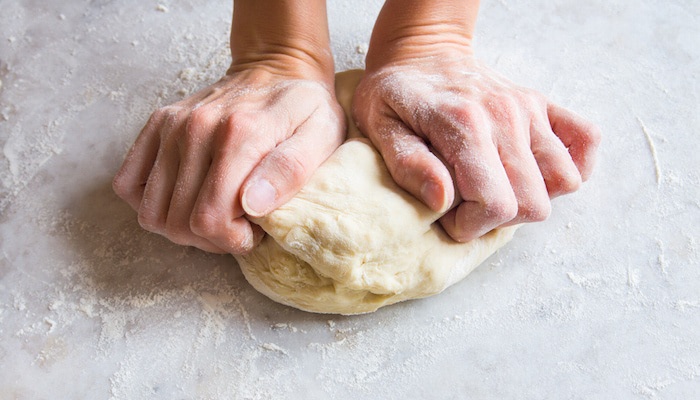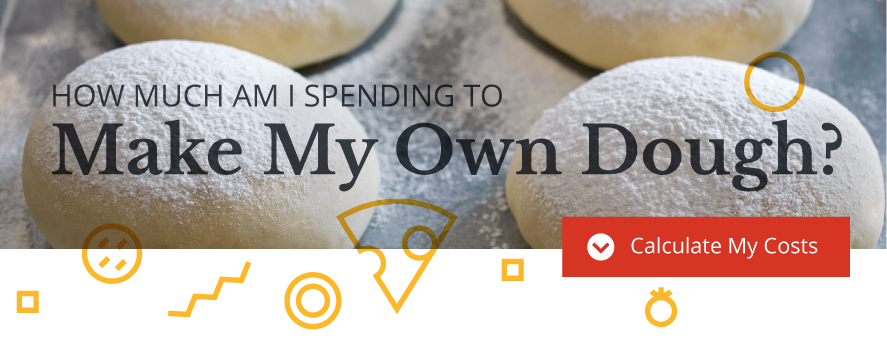 The success of your pizzeria depends on many factors: pricing, location, customer experience and more. But the most important driver of success is the flavor and quality of your food — it’s why customers keep coming back. As you grow and add more locations, it becomes difficult to replicate those experiences and quality at each one. The crust and final products produced by employees at different locations will inevitably have variances — whether from unintended mistakes in how the recipes are executed or from uncontrollable differences like water quality, weather and other surroundings.
The success of your pizzeria depends on many factors: pricing, location, customer experience and more. But the most important driver of success is the flavor and quality of your food — it’s why customers keep coming back. As you grow and add more locations, it becomes difficult to replicate those experiences and quality at each one. The crust and final products produced by employees at different locations will inevitably have variances — whether from unintended mistakes in how the recipes are executed or from uncontrollable differences like water quality, weather and other surroundings.
Using pre-made dough balls or crust and pre-mixed sauces for pizza and pasta can alleviate inconsistencies that occur between multiple locations and different employees’ preparation methods.
We commonly get asked many questions when an operator is considering substituting “home-made” recipes with pre-made products, such as: Will my pizza retain its light, crispy texture? Will the flavor profile be “off”? Will I need to change my processes? More importantly, will my patrons notice the difference?
These are good questions. Luckily, if you’re working with a supplier that offers custom crust recipes like A&K, we can match your recipe exactly and patrons will never know the difference — if anything, they’ll have a more positive impression because they’ll get the consistent crust they’ve come to expect from your brand.
If you’re considering changing from scratch to pre-made, here are 3 steps to ensure a successful transition from both a customer and operational perspective.
1. Conduct Taste Tests and Demos
Perhaps you sampled a pre-made product at a trade show or at another restaurant and were impressed with the flavor and quality. However, the only way to know how a crust or other product will taste and perform in your operation is to prepare it in your ovens and with your toppings. The type of oven used can greatly affect a crust’s performance. Request product samples from the food manufacturer so you can prepare the dishes and perform taste tests in your own cooking environment to determine the flavor profiles you prefer. Ask if the manufacturer will come onsite to conduct a product demo for you as well, and if they offer any training resources for your kitchen staff.
If you’re looking for a food manufacturer that can duplicate a tried-and-true family recipe, work with one that has the ability to customize a formulation to replicate the flavor and texture. At Alive & Kickin’, we have a “sky’s the limit” approach to custom crusts and sauces and are able to recreate almost any special recipe or nutritional requirements.
2. Assess Inventory Needs and Space Requirements
Your food manufacturer will likely have a minimum purchase requirement. For example, the minimum requirement for Dough Shop® by A&K dough balls is 18 cases. This amount is typically manageable and lasts about two weeks for the average operator. You’ll need to determine what items in your inventory will no longer be needed and assess the space requirements for the new products. For example, if transitioning to using pre-made dough balls or crusts you’ll likely require more freezer and refrigerator space. However, pre-made products generally free up space in your pantry since you won’t have to stock bulk dry goods for making fresh dough. Be sure to have a system in place for inventory rotation so you can work through old items while switching over to the new products.
3. Calculate Food & Labor Costs
Using pre-made products can play a pivotal role in controlling food costs by providing predetermined portions and consistency from one order to the next. This allows you to accurately price items on your menu and calculate the profit margins of each. Typically, your food inventory should not exceed 28-30 percent of your gross food sales.
At first glance, it may appear that the cost of pre-made dough is higher per pizza, but when factors like spoiled raw ingredients, labor costs for dough prep, equipment maintenance, employee error in preparation and other waste are calculated, you’ll likely discover that ready-made products are no more expensive and the benefits are greater. That’s why it’s important to calculate the total cost of tangible and intangible items you’re replacing and not just the crust ingredients themselves.
Whatever brought you to the point of considering pre-made dough or sauces, it’s important to not compromise the established quality your patrons have come to love and expect. If you’re ready to take the next steps, reach out to the pizza experts at Alive & Kickin’ to see how we can help make the transition as smooth and cost-effective as possible.
Identify an estimated per-dough-ball cost of making your own dough with our Pizza Dough Cost Calculator. Get started by clicking the button below!





